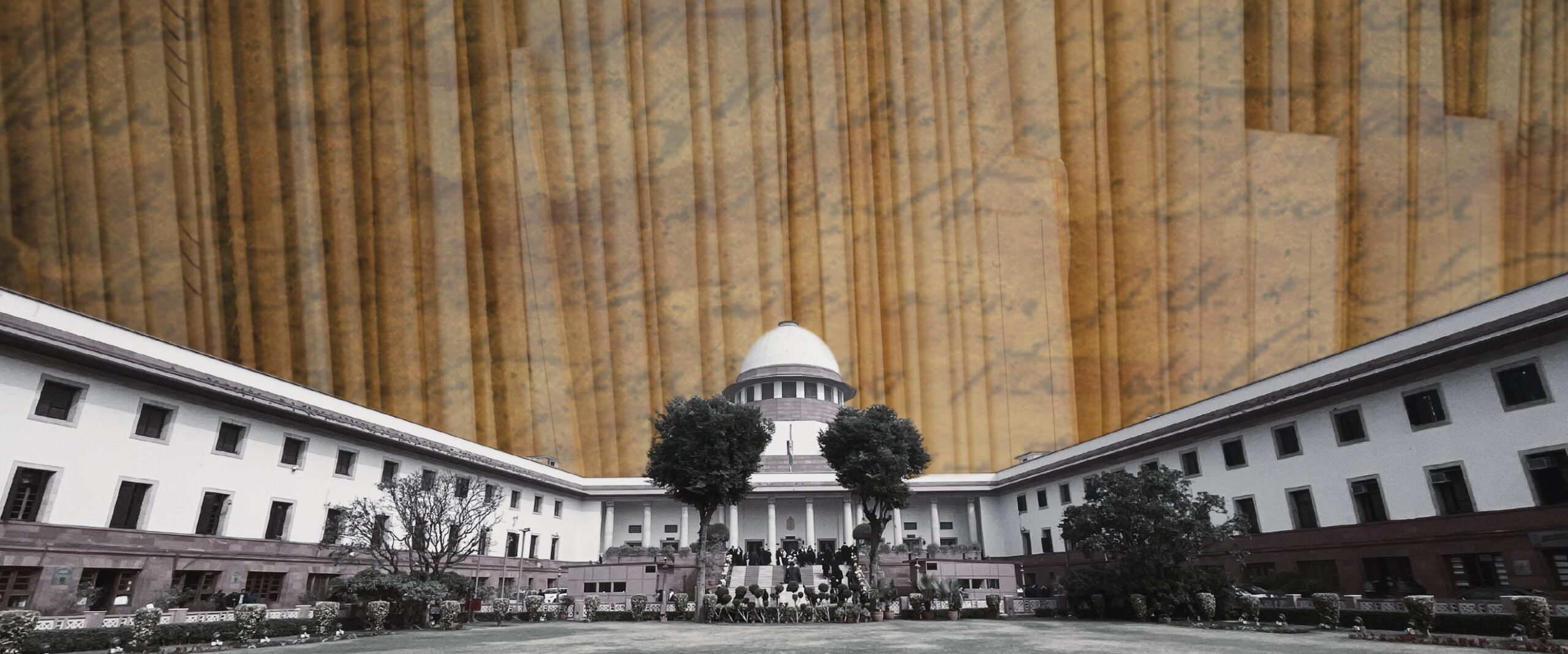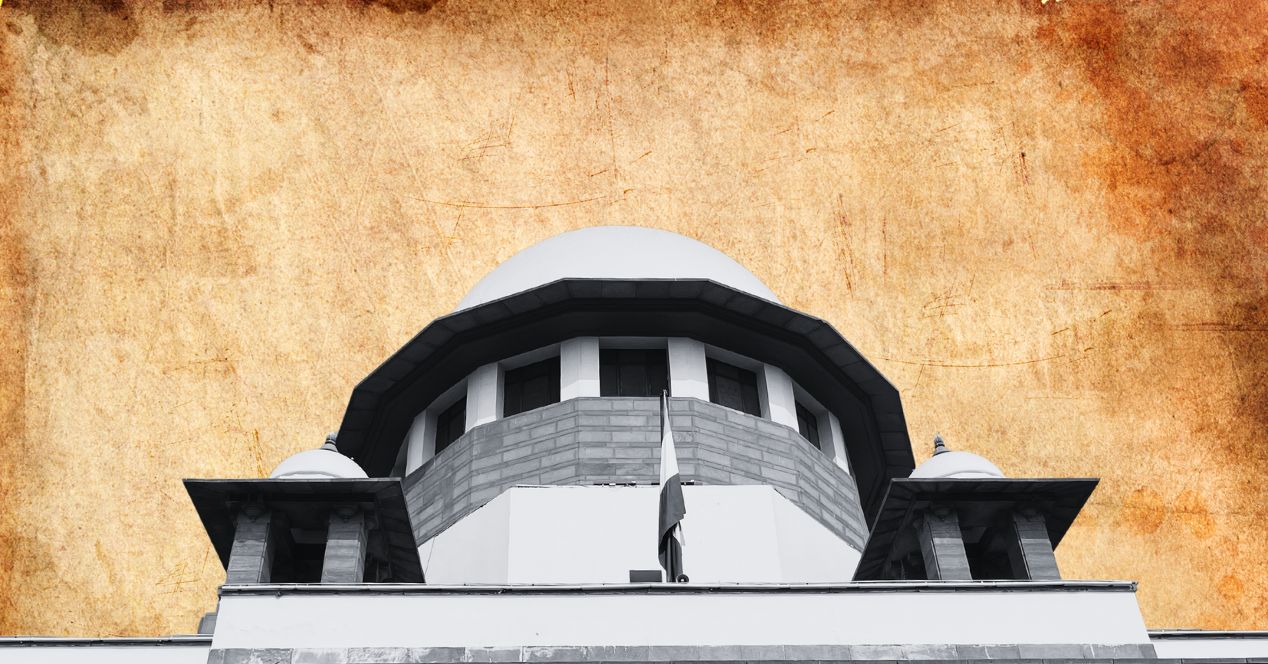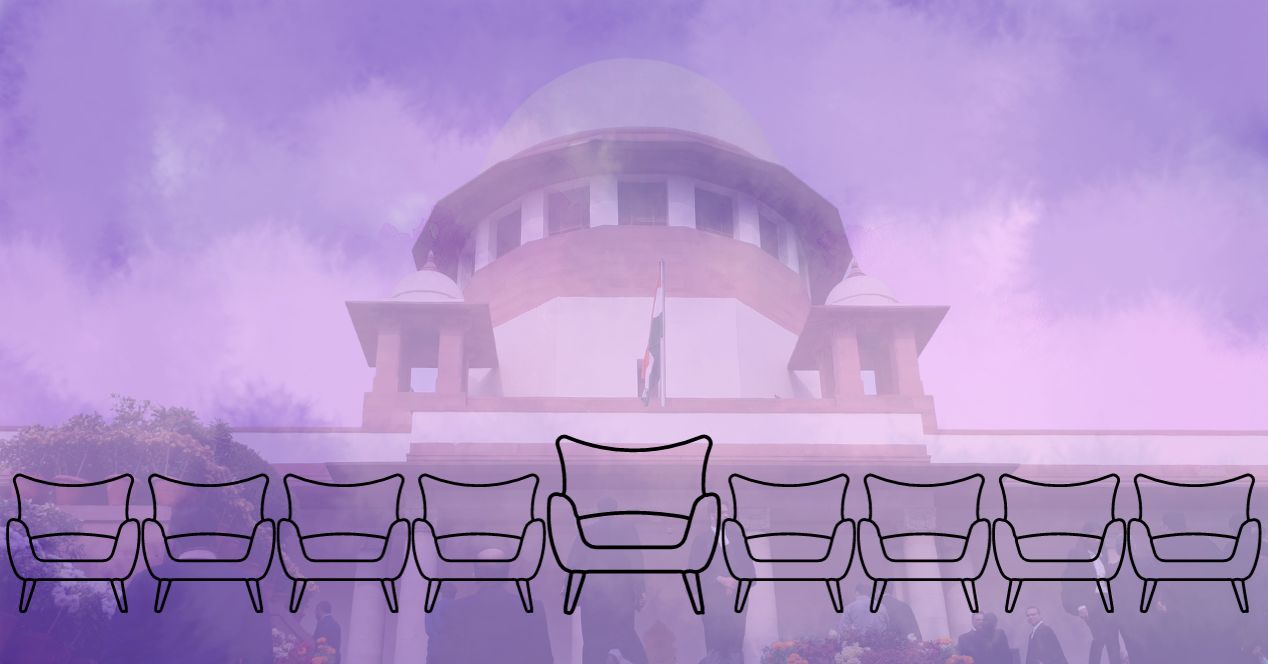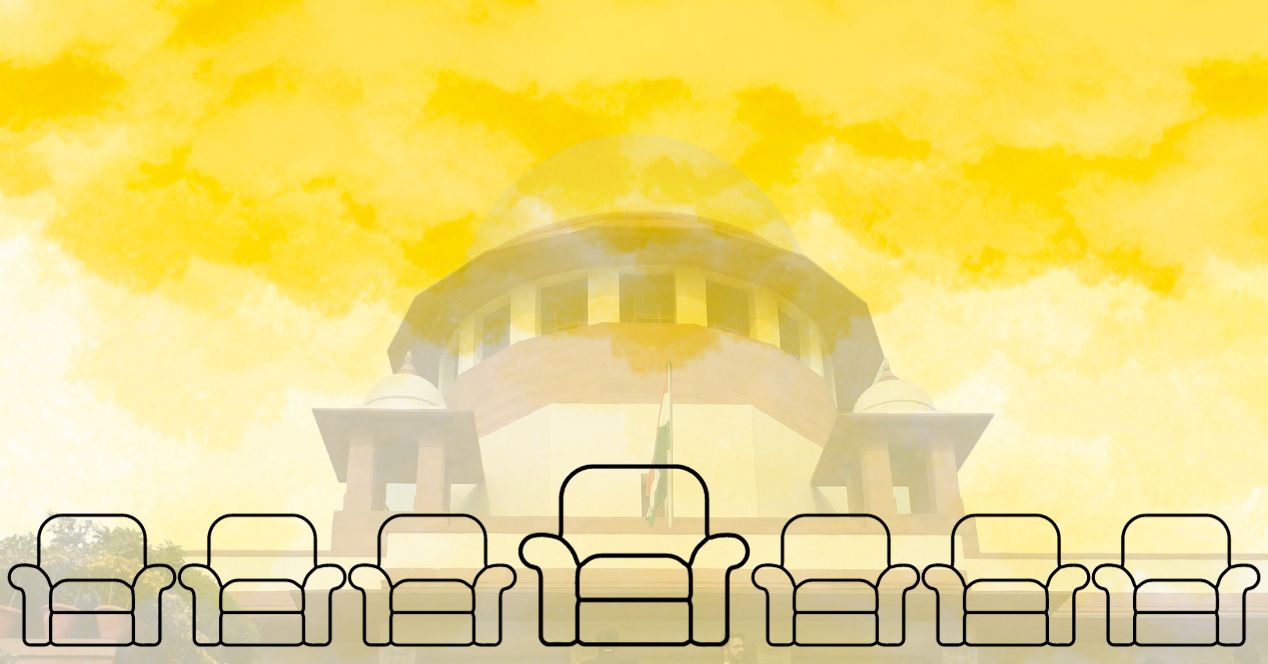Analysis
What are the oldest pending cases at the Supreme Court?
The registry’s response to an RTI filed by SCO shows that 24 cases have been pending for 30 years or more. We dig into the details

Recently, the Supreme Court Observer received a response to a Right to Information application requesting the Supreme Court to share information about cases that have been pending for more than thirty years. The idea to make an application was sparked by the Court’s listing of seven– and nine-judge bench matters for directions in October last year. We wanted to discern whether there is a pattern in the kinds of cases that come to be pending in the top court.
The Court’s registry responded with 24 cause titles. Many of them are connected matters. The full list can be accessed here. The list is dominated by cases connected to a 1986 amendment from Maharashtra. The amendment had the consequence of the state government taking over private property on the ground that the owners hadn’t taken repairs seriously.
Apart from Maharashtra Property Owners’, the other group of cases that features prominently in the list is what is known to every law student as the M.C. Mehta litigations. In these matters, the Court has issued continuing mandamus to decide public-interest issues that come up from time to time. These files have been kept open by the Court by design, for they offer a convenient route to issue discrete orders related to environment and civic governance-related matters.
The list also features an excommunication matter that has split the Dawoodi Bohra community and has ramifications on Essential Religious Practice jurisprudence in India.
Let’s look at the cases:
1. Sambalpur Merchants Association v. State of Orissa
Seven-judge bench | Pending for 30 years, 1 month and 9 days
The dispute is about the state’s legislative competence to impose surcharge on sales tax. After the Odisha government amended the Odisha Sales Tax to levy an additional tax on dealers, a civil appeal was filed in the Supreme Court in 1994.
In the course of hearings, the Court discovered that there was a contrast between its judgements in Hoechst Pharmaceuticals Ltd (1983) and India Cement Ltd (1989). The decisions differed on whether the surcharge levied was a sales tax, and whether it fell within the states’ legislative competence under List II.
The case was clubbed with similar challenges across the country and was tagged alongside Arjun Flour Mills v State of Orissa. In 1999, the case was referred to a seven-judge bench. On 7 October 2023, the Court listed the case for directions for the first time since 2016. On 9 January 2024, Anindita Pujari was appointed as nodal counsel in the case. It will be heard on 16 April 2024.
2. Arjun Flour Mills v State of Odisha Finance Department Secretary
Seven-judge bench | Pending for 30 years, 1 month and 19 days
This is the main matter related to resolving the Court’s contradictory judgements in Hoechst Pharmaceuticals Ltd (1983) and India Cement Ltd(1988). Sambalpur Merchants Association is a connected matter in this case. The ambiguity has arisen because the power to make laws on sale and purchase of goods comes under the State List but the surcharge on annual turnover could be seen as an income tax, which comes under the Union List. It will be heard on 16 April 2024.
3. Maharana Mahendra Singh Ji v Maharaja Arvind Singhji
Division Bench | Pending for 30 years, 10 months and 23 days
Maharaja Bhagwat Singhji of Mewar (Udaipur) died on 3 November 1984. He was survived by two sons, a daughter and his wife Rajmata Sushila Kumari. In a dramatic turn, the Maharaja left his possessions only for his youngest son Arvind and his daughter, not leaving anything for his eldest son Mahendra Singh, who had been feuding with his father over property management.
The “nobles”, however, believed that the Maharaja had no right to will away the Mewar property and that Mahendra was the rightful head of the family. While Mahendra stayed in possession of the property for a bit, he eventually decided to fight the matter out in courts, leaving the disputed property under government seal.
In 1987, the Rajasthan High Court directed that any possessions taken over by the SHO Ghantaghar be returned to the party who last held them. This party would be Arvind Singh but the SHO instead passed the property to Mahendra. Arvind filed a contempt petition in response. On 23 March 1993, a Division Bench of the High Court delivered a verdict on the contempt petition. The challenge to this order is what remains pending before the Supreme Court.
4. Manju Kacholia v State of Maharashtra
Nine-judge bench | Pending for 30 years 11 months and 8 days
This case is one of the connected matters in the main matter of Property Owners’ Association v State of Maharashtra. Property Owners’ is one of the nine-judge bench cases listed to be heard by the Supreme Court in 2024.
The petition, like many other connected matters, arises from the acquisition of certain “cessed” properties by the state government under Chapter VIII-A of the Maharashtra Housing and Area Development Act, 1976 in 1986. These “cessed” properties were buildings that had been earmarked by the government for being in an “old and dilapidated” state for a long period.
The amendment was said to have been inserted because landowners were not effecting repairs on their buildings. To restore the properties as part of its welfare mandate, the state was taking over these properties.
Various landowners have challenged the amendment. The Manju Kacholia matter arises from a challenge to a 1993 judgement of the Bombay High Court. It is one of the 14 connected matters in the Property Owners’ Association case.
5. Abhiram Singh v C.D. Commachen (Dead)
Five-judge bench | Pending for 31 years and 3 months
This case broadly relates to interpretation of ‘corrupt practice’ under Section 123(3) of the Representation of People Act, 1951 (‘RoPA’) and the interpretation of three judgements of the Supreme Court.
The first pertains to a challenge to the 1990 election of Abhiram Singh to the Santa Cruz Assembly Constituency in Mumbai. A three-judge bench of the Bombay High Court stated that the interpretation of ‘corrupt practice’ needed to be “clearly and authoritatively” laid down to avoid any “miscarriage of justice”.
The second case dealt with a similar challenge against Sunderlal Patwa of the Bhojpur constituency (Madhya Pradesh) for corrupt practice.
The third judgement is Jagdev Singh Sidhanti v Pratap Singh Daulta (1964), where the Court held that appealing to the electorate on a ground “personal to the candidate relating to his language” attracts the prohibition of a corrupt practice under Section 123(3).
On 2 January 2017, a seven-judge bench of the Court in a 4:3 majority held that the expression ‘his’ used in Section 123(3) referred to the religion, race, community and language of the candidate in whose favour an appeal to cast a vote is made or that of another candidate against whom there is an appeal to refrain from voting on such grounds.
They noted that the jurisprudence was settled on this matter. Having decided the question of law, the dispute was directed to be listed before a bench consisting of the Chief Justice. On 3 May 2023, a Division Bench of the Supreme Court directed the registry to place the matter before a five-judge bench.
6. Property Owners’ Association v State of Maharashtra
Nine-judge bench | Pending for 31 years and 3 months
This is the main matter in Property Owners’ Association which was filed on 31 December 1992.
At the centre of this complex litigation is interpretation of Article 39(b) of the Constitution and whether “material resources” under the provision also means private property. The Maharashtra government had justified the acquisition of “cessed” properties for welfare purposes as being in furtherance of Article 39(b), which speaks of the distribution of “material resources” of a community for common good.
In 1978, in State of Karnataka v Ranganatha Reddy, two separate judgements were delivered: one by Justice Krishna Iyer and two others holding that material resources of the community covered all resources including those that were natural and man-made and publicly and privately owned, and another by four judges which disagreed with Justice Iyer’s reading of Article 39(b) but did not go into the reasons why it did so.
In Sanjeev Coke Manufacturing Company v Bharat Coking Coal Ltd (1983), the Court reaffirmed the interpretation of Justice Iyer and two other judges. On 19 February 2002, the Court took note of the nine-judge bench decision in Mafatlal Industries Ltd. vs. Union of India (1997), which had held that private property comes under the ambit of “material resources of the community” under Article 39(b). It stated that it had “some difficulty in sharing the broad view” adopted in Mafatlal Industries.
It also noted that the dispute was similar to IR Coelho v State of Tamil Nadu (1999). Since that matter had been referred to a nine-judge bench, the Court also referred Property Owners’ Association to a nine-judge bench.
7. Property Owners’ Association v State of Maharashtra, the State of Maharashtra Chief Secretary
Nine-judge bench | Pending for 31 years, 3 months and 28 days
This is not the main matter in the Property Owners’ Association saga but arose from a civil writ petition filed on 3 December 1992. The writ challenged Chapter VIII-A of the Maharashtra Housing and Area Development Act, 1976.
It was first tagged with Kamlesh C. Shah v State of Maharashtra (2013) which raised similar questions. On 20 February 2002, the questions arising from the writs were referred to a bench of nine judges. During pendency, no restoration work was carried on the properties even as they remained under the control of the state government.
During this time, some tenants and landlords entered into Development Agreements to restore the properties themselves and prayed before the Court that the acquisition be “stopped” and property be returned. On 3 July 2013, a three-judge bench refused to grant interim stay.
8. Dr Aspi Framroze Golwalla v State of Maharashtra
Nine-judge bench | Pending for 31 years, 10 months and 2 days
This is a connected matter in Property Owners’ Association, arising from a writ petition filed on 3 December 1992. After the petition was filed in 1986, on 13 December 1991, a Bombay High Court Division Bench of Justices M.L. Pendse and N.D. Vyas held that the Chapter VIII-A was neither unreasonable nor violative of Article 14 of the Constitution.
It noted that the writ jurisdiction of the High Court did not “entitle the Court to legislate” and appreciated the legislature’s measures to ameliorate the issues faced by tenants. The Court refused to grant relief noting that there was no fundamental rights issue involved. This specific writ challenges a Bombay High Court order passed on 16 December 1991. The challenge to this decision will be heard by the nine-judge bench.
9. Dharamdas Hargovinddas v State of Maharashtra
Nine-judge bench | Pending for 31 years, 11 months and 2 days
As a connected matter in Property Owners’ Association, this litigation arose from an April 1992 Special Leave Petition (SLP) challenging the Bombay High Court decision delivered on 16 December 1991.
10. Krishanlal Mohanlal Thakar (Dead) v State of Maharashtra through Secretary
Nine-judge bench | Pending for 31 years, 11 months and 14 days
A connected matter in Property Owners’ Association, this litigation arose from a SLP (Civil) filed on 18 April 1992. The SLP challenged the 16 December 1991 order passed by the Bombay High Court Division Bench. This order was also challenged in Aspi Golwalla and Dharamdas Hargovinddas.
11. Vinodray Harkishandas Sanghavi of Bombay, Indian Inhabitant v State of Maharashtra
Nine-judge bench | Pending for 31 years, 11 months and 16 days
A connected matter in Property Owners’ Association, this litigation arose from a SLP (Civil) filed on 16 April 1992. Just like in Aspi Golwalla, Dharamdas Hargovinddas and Krishanlal Mohanlal Thakar, this SLP also challenged the 16 December 1992 order of the Bombay High Court.
12. Pramila Chintamani Mohandas of Bombay, Indian Inhabitant v State of Maharashtra
Nine-judge bench | Pending for 31 years, 11 months and 30 days
This is also similar to the earlier case and arose from a SLP (Civil) filed on 2 April 1992, challenging the taking over of “cessed properties” by the Maharashtra government for restoration purposes. It also challenges the judgement of the Bombay High Court dated 16 December 1991.
13. Shivram Ramayya Yerala v State of Maharashtra through Secretary
Nine-judge bench | Pending for 32 years and 8 months
This is the oldest pending connected matter in the Property Owners’ Association. This SLP (Civil) was filed on 6 April 1992.
14. Raichand Korshi Shah v Malshi Meghji Charla
Nine-judge bench | Pending for 32 years, 3 months and 1 day
This is the oldest pending criminal case in the Supreme Court to date. It is one of the connected matters in the case pertaining to challenges to the Dawoodi Bohra leader’s power of excommunication which has now been referred to the nine-judge bench in the Sabarimala review. (See details of the Dawoodi Bohra case at Item #19 below)
15. All India Judges Association v Union of India
Division Bench | Pending for 34 years, 6 months and 9 days
This case pertains to the working conditions of the members of the subordinate judiciary. The Court has issued multiple directions under the rubric of this case, including the formation of the First National Judicial Pay Commission (Shetty Commission). Suggestions made by the Shetty Commission have included the establishment of a judicial academy for the continuous training of judges, and the provision of incentives for junior judges.
Through this litigation, the Court is also considering individual petitions pertaining to irregularities in judicial service. For instance, in its judgement dated 19 April 2022, a three-judge bench held in favour of two officers of the Delhi Judicial Service cadre by modifying the existing quota on promotion on the basis of a limited departmental competitive examination.
16. State of Assam v Union of India
Division Bench | Pending for 34 years, 11 months and 22 days
This case is about long-standing boundary disputes between Assam and Nagaland and has been examining various witnesses and evidence on the boundary disputes. In the course of this litigation, the Court has permitted both the states to produce maps under the Survey of India. The matter arose from an original suit which was filed on 10 April 1992.
17. State of Assam v Union of India
Division Bench | Pending for 35 years, 3 months and 21 days
This is the first Original Suit filed in the larger litigation of State of Assam v Union of India. It has since been clubbed with various cases pertaining to boundary disputes involving Assam. Notably, another original suit on the state’s boundary dispute with Arunachal Pradesh was also part of this litigation. Since then, Arunachal and Assam have sought to settle their differences out of court. The matter will be next heard on 29 April 2024.
18. Shamrao Bajirao Pawar v Smt. Housabai (Dead)
Before the Registrar | Pending for 35 years, 7 months and 21 days
This matter arises out of a Civil Appeal and SLP (Civil) filed on 12 May 1995.
We could not locate substantial information on the case from the orders available from the Supreme Court website. Given how far back the matter goes, the relevant High Court orders are also not accessible online. We will update this section as and when we obtain this information. We invite our readers to get in touch with us about the case details if they have reliable information.
19. Central Board of Dawoodi Bohra Community v State of Maharashtra
Nine-judge bench | Pending for 38 years, 1 months and 2 days
The Bombay Prevention of Excommunication Act, 1949 prohibited the excommunication practice that was exercised by the Dawoodi Bohra religious leader. In Sardar Syedna Taher Saifuddin Saheb v State of Bombay (1962), a five-judge bench of the Court declared the excommunication legislation as unconstitutional as it trampled upon the legitimate disciplinary powers of the religious leader.
On 28 February 1986, a reformist group called the Central Board of Dawoodi Bohra Community filed a writ petition for the judgement in Sardar Syedna to be reconsidered. In February 2023, Sardar Syedna was referred to the nine-judge bench in the Sabarimala Review.
As of today, the specific issue in the matter is moot because the 1949 Maharashtra Act has since been repealed and replaced by a 2016 Act. The 2016 Act also prohibits excommunication as a practice, but because the originally challenged law is now dead and the 2016 Act only prohibits excommunication in Maharashtra, the matter has broadened to adjudicate on the constitutionality of the practice more generally.
20. M.C. Mehta v Union of India
Letter petition and PIL matters; Division Bench | Pending for 38 years, 9 months and 4 days
Many of the cases where environmental lawyer M.C. Mehta is a party have transformed into a knot of litigations through which the Court enforces a continuing mandamus on environmental matters. It does this by passing various orders and directions and monitoring compliance of environmental regulations and directions.
In this particular package of cases, the Court has given directions on the registration of water tankers and trucks as essential services in New Delhi, and has repeatedly given directions to the Transport Authority for registration of hydrant dispensers to be used for aviation turbine fuel delivery.
21. M.C. Mehta v Union of India
Letter petition and PIL matters; Division Bench | Pending for 38 years, 11 months and 16 days
This batch of cases and continuing mandamus begin from a writ petition filed on 16 April 1985. The writ was about violations of municipal and environmental laws and town planning norms in the city of Delhi. Under this matter, the Court has issued a bunch of orders on the commercial use of residential premises.
22. M.C. Mehta v Union of India
Letter petition and PIL matters; Division Bench | Pending for 39 years, 8 months and 7 days
Among the most important environmental law continuing mandamuses, the Court has been supervising compliance with environmental standards in the Taj Trapezium Zone (‘TTZ’) under this case. The TTZ is a defined area spreading over 10,400 square kilometres to protect the Taj Mahal from pollution. Owing to air pollution and acid rain, the Taj Mahal’s marble facade has been deteriorating consistently.
In a judgement passed within this batch of cases on 30 December 1996, the Court laid strict regulations for all industries under the TTZ region. As part of its continuing mandamus, the Court has overlooked the setting up of a hydrocracker unit in Mathura refinery, construction of the Agra bypass to divert traffic away from the city interiors, the setting up of a green belt, and the closing of all emporia and shops on the monument premises.
23. Abdul Karim Banday v Union of India
Three-judge bench | Pending for 41 years, 5 months and 19 days
The case arises from a civil writ petition filed on 11 October 1982. We could not locate substantial information on the case from the orders available from the Supreme Court website. Given how far back the matter goes,, the relevant High Court orders are also not accessible online. We will update this section as and when we obtain this information. We invite our readers to get in touch with us about the case details if they have reliable information.
24. Hans Raj Sharma v State of Jammu & Kashmir
Three-judge bench | Pending for 41 years, 5 months and 19 days
We could not locate substantial information on the case from the orders available from the Supreme Court website. Given how far back the matter goes, the relevant High Court orders are also not accessible online. We shall update this section as and when we obtain this information. We invite our readers to get in touch with us about the case details if they have reliable information.




